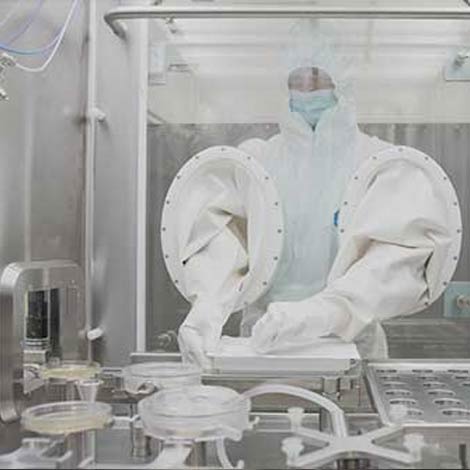Will you define the contamination control strategy
At Particle Measuring Systems we have the contamination control experts to support you at every step in your process. Whether it be non-compliance issues, setting up a new process, or training employees, our team has the background, education and industry expertise you need. Our ongoing dialogue with worldwide regulatory agencies ensures you are on the cutting edge of the latest requirements, and we have the knowledge and background to support you at all stages of your operation. Whatever your contamination control hurdle is, you can trust that the experts at PMS have seen it and are equipped to remedy the problem for good, setting you operations on a path to gold-standard success.

Environmental Monitoring Risk/Gap Assessment

Assessment
Define and/or review the monitoring sampling points in your clean environment from both design and process perspective using a scientific and risk-based approach, allowing you to measure and mitigate the contamination events.
Particle loss in transport tubing can occur due to a combination of various external factors. To assess the risk and potential impact on the finished product, it is crucial to conduct particle transportation tests. The primary objective of these tests is twofold: first, to quantify the resultant particle losses within a remote sampling system, and second, to provide documented evidence characterizing the efficiency of viable and non-viable monitoring processes. By addressing these aspects, manufacturers can gain valuable insights into the particle transportation dynamics in their remote systems and ensure appropriate measures are taken to maintain product quality.
The majority of the information you need to predict future contamination events is already present in your day-to-day activities. Using a combination of collected data, process assessment, and statistical methods, Particle Measuring Systems analytical experts will define action and alert limits to help control processes, thereby reducing Out of Specification (OOS) events.
Identify the proper cleaning and disinfection strategy and design a preemptive plan to control and prevent contamination according to your facility design, surfaces and manufacturing processes. Our experts help you provide a documented rationale.
Gowning may seem like a well-controlled activity as it relates to your aseptic process, but there are many aspects to consider that our experts have come across in their years of experience and benchmarking.
Increase quality and sterility assurance in your manufacturing processes using the latest innovative and robust risk analysis techniques to prevent sterility deviations and microbiological events.
Use our experts to assist you in designing an Aseptic Process Simulation or “Media Fill” that will not only fulfill the requirements of your aseptic process validation but will also act as a building block for characterizing critical points for intervention in your process.
New Filling Line Quality by Design (QbD) & Process Analytical Technology (PAT)
Plan contamination control principles into your new fill line or process with quality built-in from the design stages. Use our expert microbiology and sterility assurance support to assist you.
Our expert support team of aerosol engineers and viable contamination experts can help you to recreate, remedy, and prevent deviation events in the future.
Analyze critical production input systems and their points-of-use from a design and process impact perspective using a scientific and risk-based (QRM) approach. Set the right monitoring sampling frequency based on your unique process needs and utility characteristics.
Design a Contamination Control Strategy for an individual process or a complete facility developed from an in depth understanding of your operation. Our experts use risk-based approaches to design a strategy that will control the impact of viable and non viable contamination on the product.
Sterility Assurance Audits
Our Advisory Team can help you prepare for regulatory inspections by characterizing and defining the most critical points of contamination control in your process. We can then help you understand where and why these are important and how to overcome vulnerabilities. Once your process is understood from this perspective, we provide mock audits to solidify your awareness and confidence in your system.

